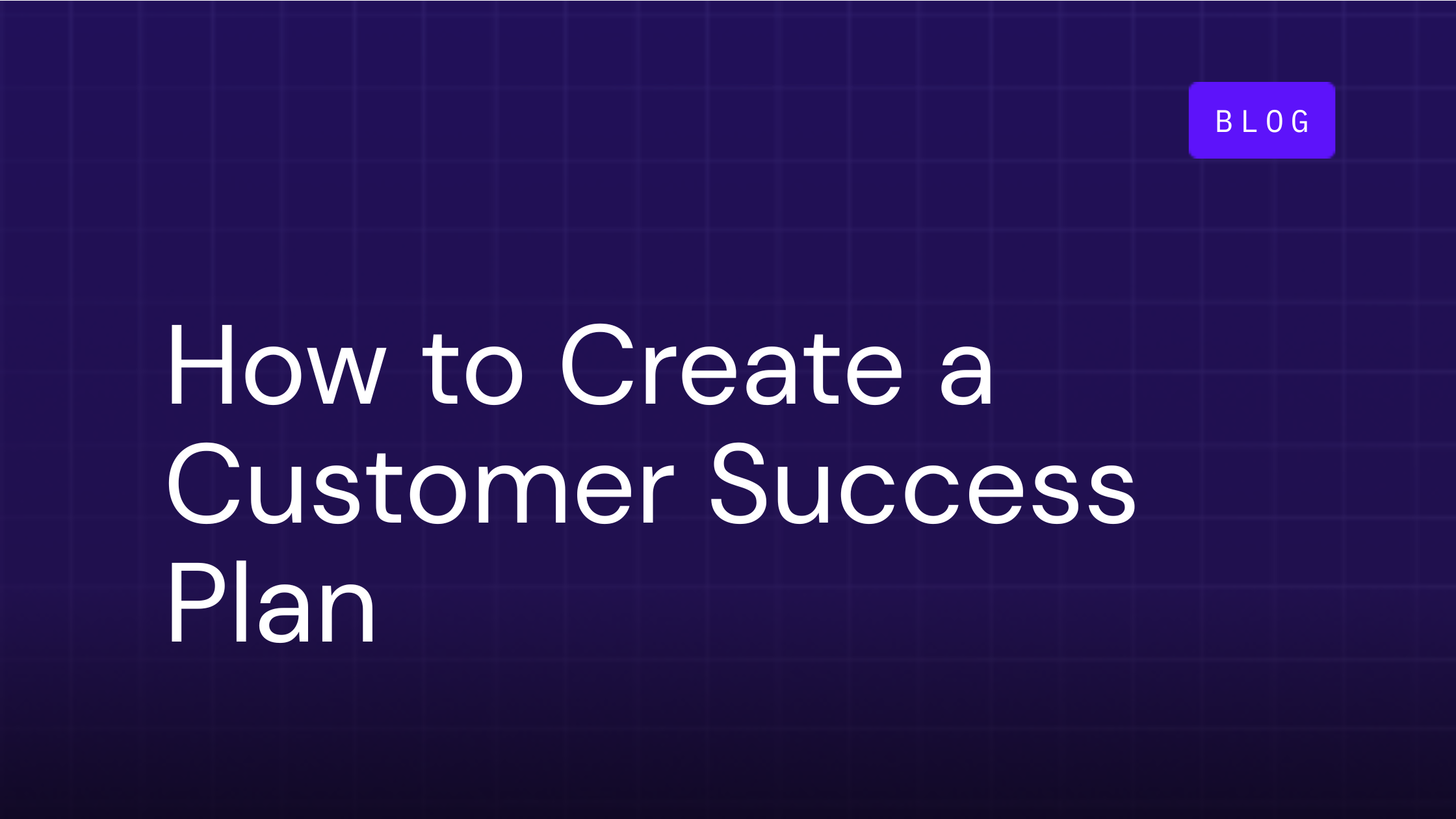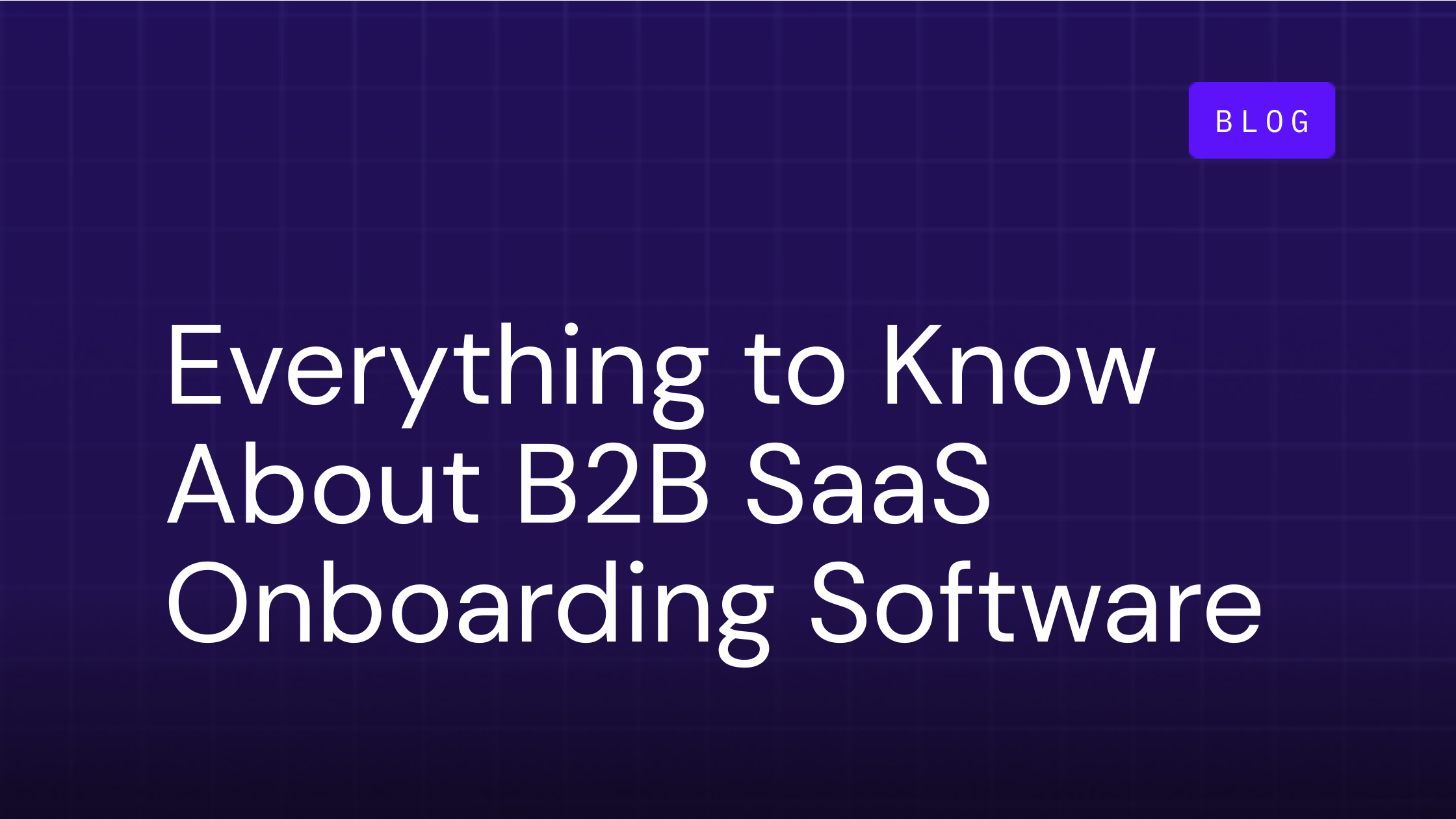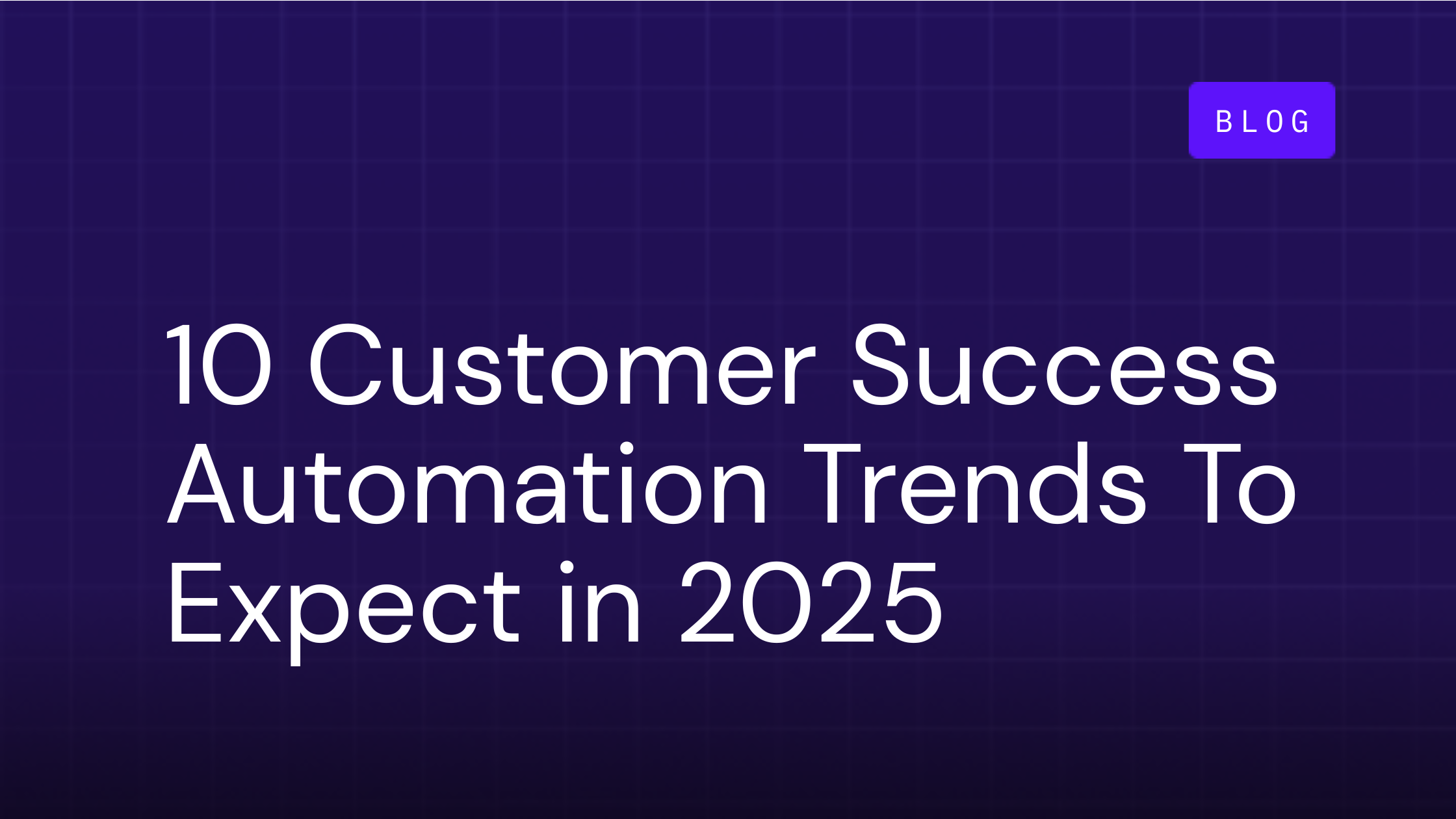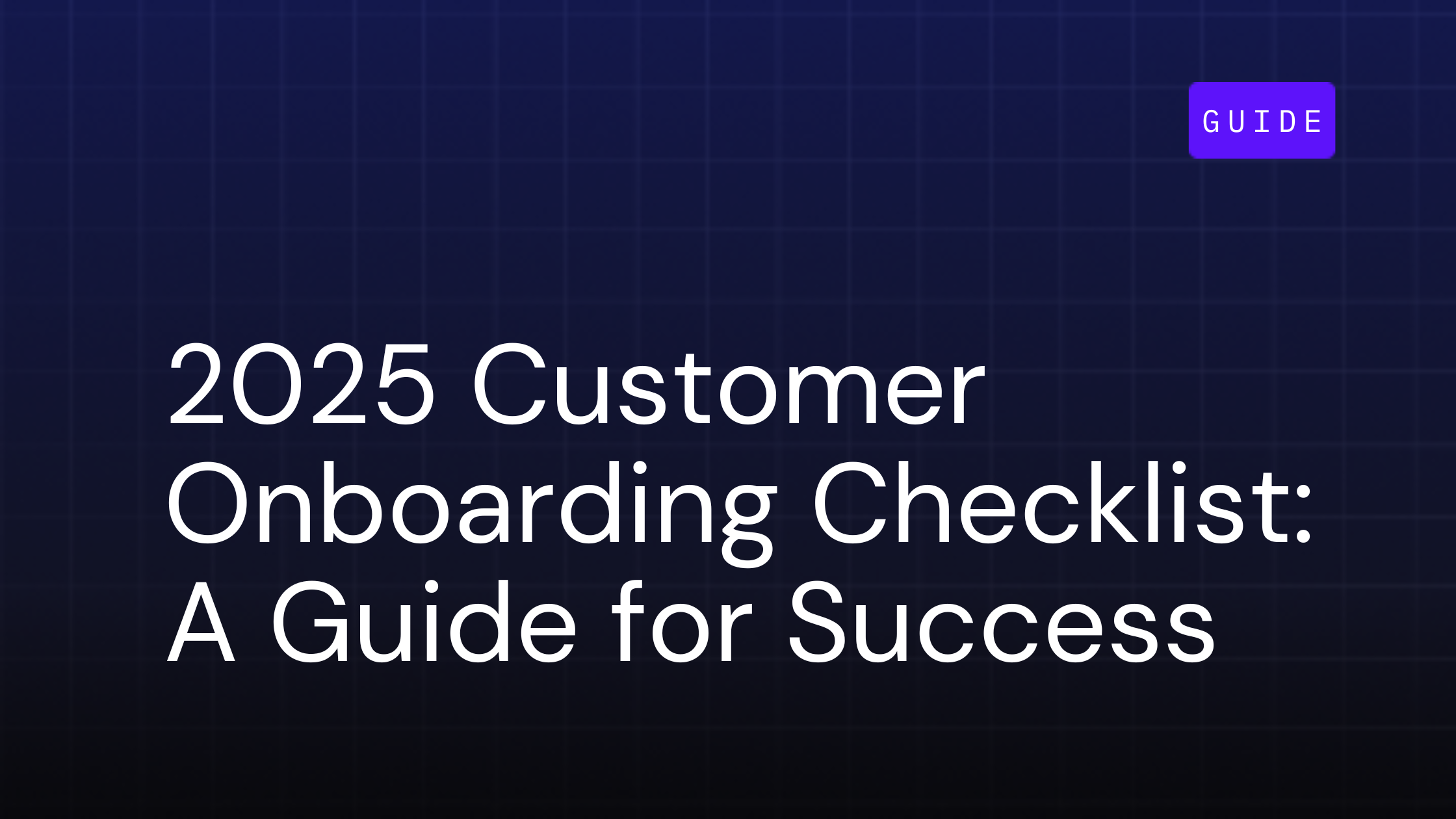How to Create a Customer Success Plan
Published: June 6, 2024

Table of Contents
Customer success should top the priority list for any B2B SaaS business. After all, your customers' success is your success. A well-crafted customer success plan guides customers to achieve their desired outcomes with your product and aligns everyone's efforts toward shared goals.
This guide covers the importance of having a customer success plan and what an effective one looks like. You'll learn the key elements to include and get a step-by-step process for creating a customized plan tailored to your customers' needs. Whether new to customer success or enhancing your current approach, these insights will help drive meaningful results through purposeful customer journeys.
What Is a Customer Success Plan?
A customer success plan is like a treasure map that leads you and your customers to the ultimate prize: their success with your product. It's a plan that lays out all the steps, milestones, and actions you'll take to help them get the most out of your offering, from the moment they sign up to the day they renew.
Why You Need One
By giving your internal team a clear roadmap for managing customer relationships, success plans help you make sure your customers are getting the results they want. This keeps them happy, and a happy customer is less likely to churn.
OnRamp can help you achieve stronger customer loyalty. You'll be able to boost your retention rate and revenue, and your customer success team will have the framework they need to work more efficiently and effectively.
What To Include in Your Customer Success Plan
A well-rounded customer success plan should have these key elements:
- Customer Base Profiles: Take the time to understand your customers' goals, challenges, and what they hope to achieve with your product. This helps you tailor your approach to their unique needs.
- Clear Business Goals and KPIs: Define what success looks like for each customer and set measurable customer goals. Choose customer success metrics that will help you track progress along the way.
- Milestones: Identify the key milestones in the customer journey, such as completing onboarding, achieving their first win, or hitting usage targets.
- Action Items for Each Stage: Outline the specific tasks and activities your team needs to complete at each stage of the customer journey to keep your customers on the path to success.
- Handoff Guidelines: Keep the customer experience at the top of your mind. Create a clear process for handing customers off between teams (like from Sales to Customer Success). This keeps things running smoothly and prevents any customer from falling through the cracks.
How To Create Your Customer Success Plan in 6 Easy Steps
Now that you know what goes into a customer success plan, here's how to make one:
- Define Team Roles: Clearly outline each team member's responsibilities in the customer success process. Make sure everyone knows how they contribute to helping customers succeed.
- Map Out the Customer Journey: Create a detailed map of the customer journey, including all the key touchpoints and interactions from start to finish.
- Standardize Key Processes: Develop clear, repeatable processes for essential tasks like onboarding, training, and regular check-ins. Document these processes so everyone on your team can follow them easily.
- Set Goals and Track Metrics: Work with each customer to set specific, measurable goals. Identify the key metrics you'll use to track progress toward these goals and review them regularly.
- Foster Cross-Team Collaboration: Encourage open communication and collaboration between your Sales, Customer Success, Product, and Support teams. When everyone works together, your customers win.
- Gather and Act on Customer Feedback: Seek out feedback from your customers at different stages of their journey. Use this feedback to identify areas where you can improve your success plans and processes.
Customer Success Strategies
- Use data to guide your plans. Look at how customers are using your product, their feedback, and key metrics to make smart adjustments.
- Tailor plans to different types of customers. Each customer segment has unique needs, so make sure your plans fit them.
- Focus on relationships. Regular check-ins, personalized interactions, and really listening to your customers help build trust and loyalty.
- Always be improving. As you get feedback and results, use them to keep making your success plans better. Your plans should evolve as your customers' needs change.
What an Effective Customer Success Plan Looks Like
Here are a few customer success plan templates to give you an idea of what one might look like in practice:
Example 1: Project Management Tool
- Customer: Mid-sized marketing agency
- Goals:
- Get projects running smoothly
- Help teams work better together
- Make sure projects are delivered on time
- Milestones:
- Get the team up and running in the first 30 days
- Make sure everyone's using the key features
- Hit a 90% on-time delivery rate
- Key Tasks:
- Give each team personalized training
- Check in regularly to make sure they're using the features
- Meet quarterly to see how they're doing on delivering projects on time
Example 2: Sales Software
- Customer: Enterprise sales team
- Goals:
- Get a better view of their sales pipeline
- Improve their sales forecasting
- Close deals faster
- Milestones:
- Fully integrate with their CRM in 60 days
- Have their first sales forecast review in 90 days
- Reduce their sales cycle by 10% by the end of Q2
- Key Tasks:
- Help them integrate and move their data
- Host trainings every other week on the advanced features
- Check in monthly with sales managers to review performance
Example 3: Customer Support Platform
- Customer: E-commerce company
- Goals:
- Make their support team more efficient
- Resolve customer tickets faster
- Boost customer satisfaction scores
- Milestones:
- Get all support agents trained in 45 days
- Resolve 80% of tickets within SLA in Q1
- Increase satisfaction scores by 15% in 6 months
- Key Tasks:
- Tailor training for each support agent
- Regularly check how they're using features and make improvements
- Meet every other month to review performance metrics
Next Steps
Remember, a strong customer success plan isn't just about checking boxes — it's about going above and beyond to help your customers achieve their goals. When you invest time and effort into creating action plans that genuinely set your customers up for success, the payoff will be huge. You'll see happier customers, better retention, and more growth for your business.
OnRamp can help you put these insights into action and create customer success plans that will take your business to the next level. Your customers (and your bottom line) will thank you.
Related Posts:

Everything You Need to Know About B2B SaaS Onboarding Software
The global SaaS market is booming, with experts predicting it will reach a staggering $1.016 trillion by 2032. However, one critical...

The Top 10 Customer Success Automation Trends To Expect in 2025
Customer success is more important than ever in the world of B2B SaaS. The average SaaS company spends 6% of its revenue on customer...

2025 Customer Onboarding Checklist: Step-by-Step Guide for Success
Onboarding is critical for customer satisfaction and retention in the B2B space, with 50% of businesses more likely to stay loyal to...